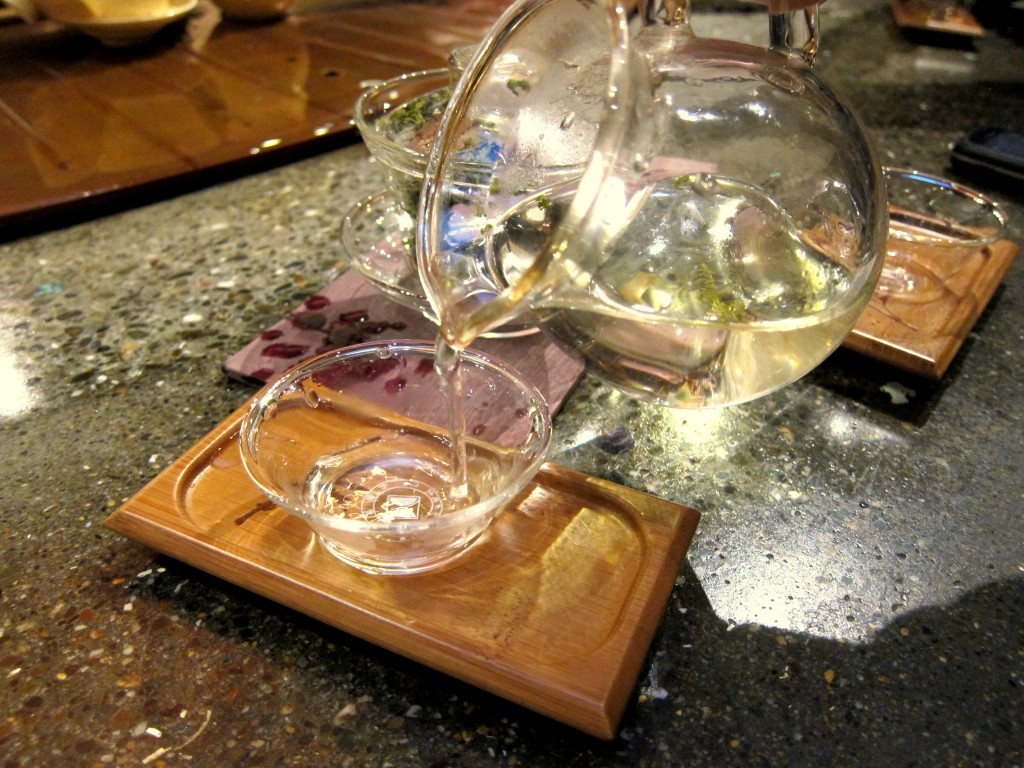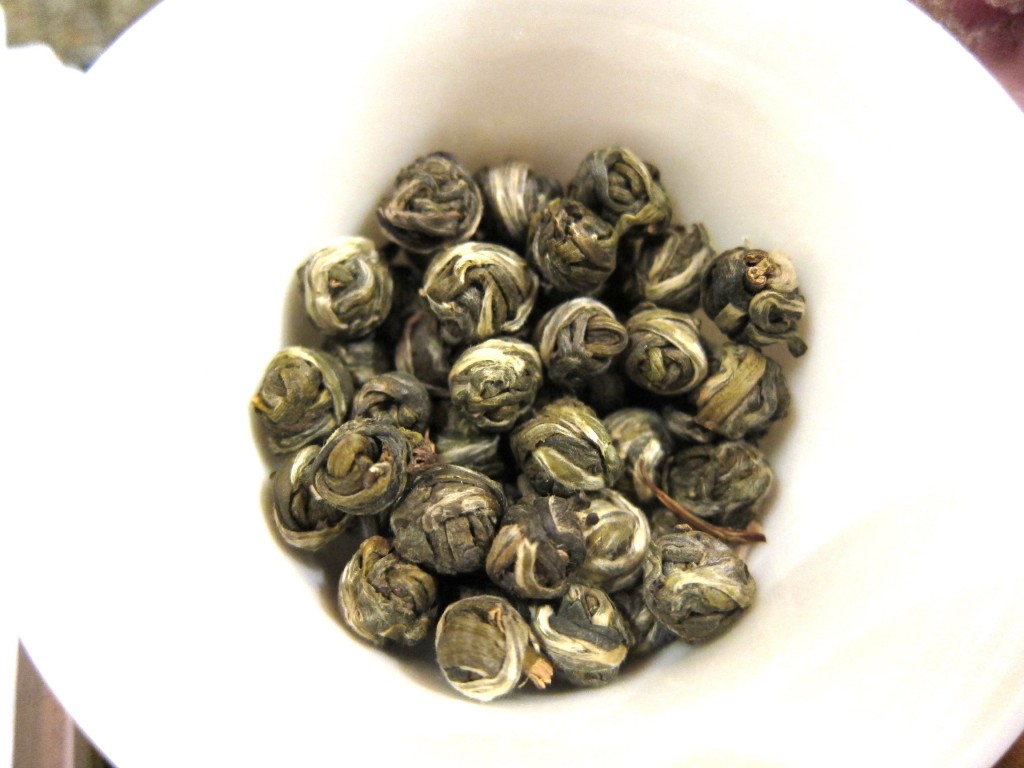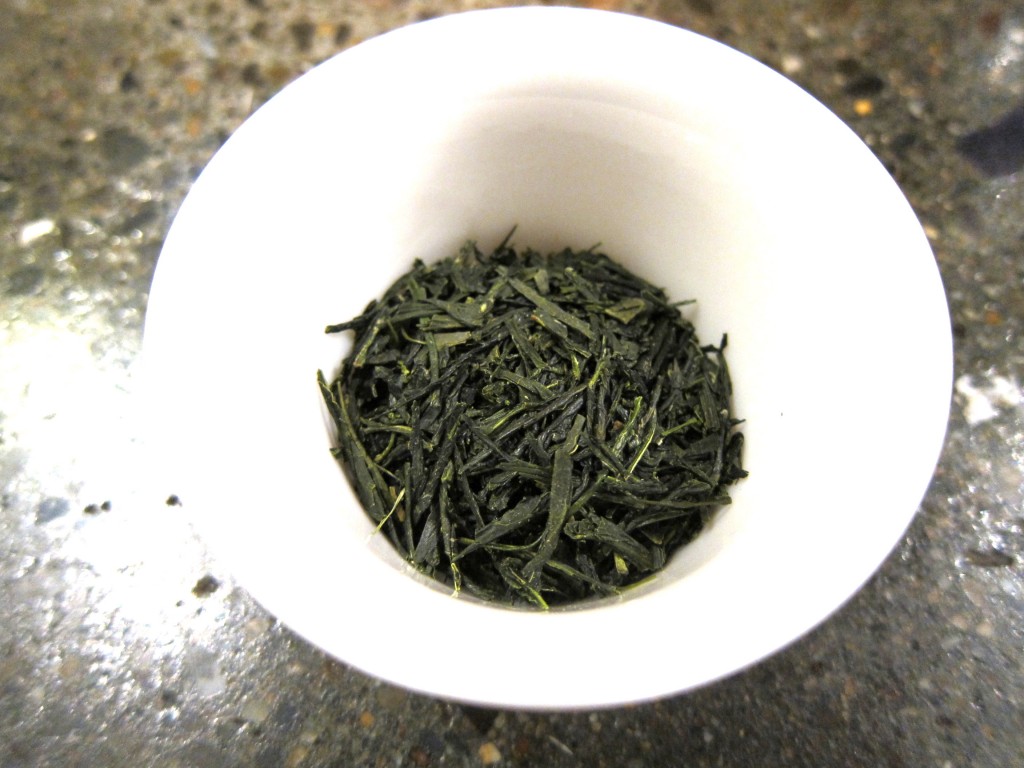My second meeting with TeaCal. Today we try 3 kinds of green tea, none of which require washing because they are too sensitive, the steeping time is also much shorter than for white tea.

1. Bi Luo Chun (“green snail spring”): originated from the Jiangsu province, China. Before steeping, the tea smells smoky. We do a top-down steep this time: pouring the hot water (~ 160F) into the gaiwan first, then add the tea. The first steep takes 20 s, the later ones take 10 s. Longer steeps produce dryer taste.

2. Jasmine green tea (also called “White Dragon Pearl”): hand-rolled into little balls. It takes 30 s to steep in 175F water. It tastes sweet but dryer than the Bi Luo Chun.

3. Sencha: Japanese green tea, the tea leaves were steamed instead of pan-fried. When Sam said that we’re going to try the jasmine tea, I was worried that the strong flavor of jasmine could overshadow the third tea, but this was not a problem with sencha. After steeping, it smells and tastes distinctively of nori (seaweed). It has the briny smoothness of sea water and shellfish. James, a Korean first-year student, describes it as the “umami” taste.
We also sample a blooming tea, which I find to taste like a grain (kind of like corn tea), but James has a more vivid description: it tastes like the skin of a chesnut. Another kind of blooming tea smells like a type of Korean pumpkin to him.
On a different note, Sam gives Esther and me a test on the gaiwans: with our eyes close, we hold three different gaiwans in our palms to feel the shape, weight, and the enamel. Then we are asked to pick our favorite. Somehow both Esther and I choose the same gaiwan, which happens to be Sam’s favorite as well. It’s a small ivory white, it was light and smooth. The others felt somewhat more frictional, one has a more angular shape, and one is a chalk white. Our favorite costs $25, which is not so pricey.